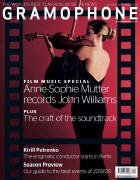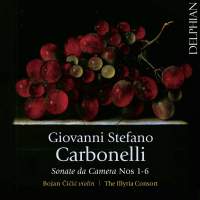Texte paru dans: / Appeared in: |
|
|
Outil de traduction (Très approximatif) |
|
|
Gramophone talks to ... Bojan Čičić
The baroque violinist considers the little-known music of Giovanni Carbonelli. How did you discover this set of sonatas? I initially stumbled across Carbonelli’s name in a music publisher’s catalogue, and then got in touch with Michael Talbot, who had prepared the edition, after reading his essay on Carbonelli’s life and work in London. It was a fascinating account of this little-known 18th-century musical figure: he was very well regarded during his lifetime but fell into relative anonymity after his death. My hope is that this recording will help to bring him back into the spotlight for modern audiences.
As an Italian
living in London, what were the main influences on Carbonelli’s style? What sets Carbonelli’s music apart from his contemporaries? It’s interesting to look at what happened after Carbonelli’s career as a violinist in London: he became a very successful wine merchant. This might have been because he couldn’t compete with the influx of younger, predominantly Italian violinists to London, with their more galant style of composing. On the other hand, Sonata XI offers us Carbonelli at his most virtuosic and modern, showing that he was neither completely stylistically calcified, nor immune to modern developments in violin technique. Why haven’t other violinists championed this music? Why modern baroque violinists have stayed away from Carbonelli is beyond me. Perhaps we live in an era when it’s much harder for musicians to take risks, because we have to be extremely careful to choose the right project in which to invest our own time and effort, and money. But if the story of Carbonelli’s discovery tells us anything, it is that as long as you have passion for what you do, others will follow. |
|




